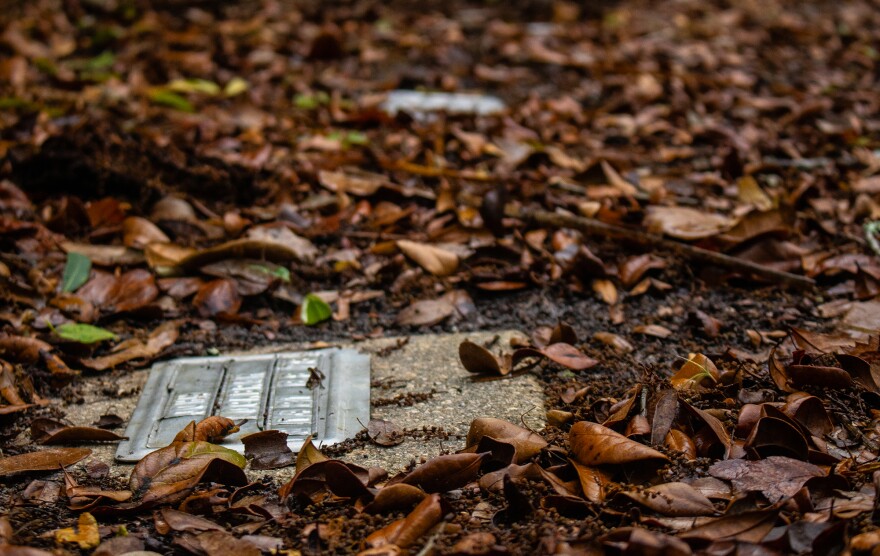The number of bodies going unclaimed in Sarasota County has almost doubled in the last 10 years, officials say.
In 2013-2014, Sarasota County received 40 unclaimed bodies from the medical examiner office for District 12, which serves Sarasota, Manatee and DeSoto counties.
In 2023, 70 bodies went unclaimed. Though COVID-19 was an outlier year, the rates have continued to steadily rise.
According to the the district’s medical examiner, Dr. Russell Vega, there are a number of reasons that a body may remain unclaimed, including inability to find a next of kin; an inability to identify, which is very rare; and refusal by family to receive the remains.
“Sometimes those folks choose not to (claim the body)... maybe because it’s a very distant relative, and they feel they don’t have a relationship with them. Or maybe even lack the financial means to do so,” said Vega. “Sometimes they have the relationship and the means, but they’ve had a strained relationship during life, so they have no desire to (claim them).”

Traditionally, the medical examiner will conduct their own investigation to attempt to locate the next of kin, a process that can “drag on for however long it takes — years even — to identify those bodies,” said Vega. Typically, however, it only takes a few days to a couple of weeks.
Once a positive identification is made, the next of kin is asked if they would like to claim the remains. If they decline, or no next of kin is found, the county will then do its own search and label the case as unclaimed if no next of kin is located or steps forward.
The process, on average, takes two to three weeks; sometimes, longer than a month, according to Vega.
From 2013 to 2022, the most recent population data available, Sarasota County’s population increased by 18.5%, according to the Census Bureau, while the rate of unclaimed bodies increased by 75%.
“It’s fair to say that all the work in the death care industry is going to be largely population driven,” Vega said, “Our population definitely increased over that time period, but (it hasn’t) doubled, so it sounds like there’s other factors at play.”
“We’ve certainly had a number of cases where we know that the families have the financial wherewithal to claim and dispose of the remains, and just choose not to do so. It’s clear in some cases that (financial difficulties) play a role, but I’m not sure it’s the dominant factor here.”Russell Vega, Sarasota County medical examiner
According to the National Funeral Directors Association, from 2016 to 2023 the cost for a funeral with burial and viewing has risen 17%, with the national average at $8,300, and $9,995 with a vault, as many cemeteries require.
During the same period, inflation rose by 26.7%, according to Labor Department data.
“We’ve certainly had a number of cases where we know that the families have the financial wherewithal to claim and dispose of the remains, and just choose not to do so,” said Vega, “It’s clear in some cases that (financial difficulties) play a role, but I’m not sure it’s the dominant factor here.”
In an increasing number of instances, investigators have to find an extended relationship to claim and arrange for funeral services.
“The next option down the line is to find someone who is willing and able to claim and arrange final disposition of the body, even if they aren’t a relative,” Vega said. “Sometimes this is a friend, or a roommate, and we attempt to locate these individuals to the best of our abilities.”

Sarasota County has cremated indivudals in the indigient cremation program starting in 2007.
“The growth in population, the relative cost of cremation versus burial, the available areas that the county has to bury bodies being quite limited; all of these factors probably play a role in this shift of … handling unclaimed bodies with cremation as opposed to burial,” said Vega.
While it may offer a more cost-effective option for some, the cost of cremation has also gone up 19.3% in the same period.
A key aspect of this process is ensuring that next of kin are provided the opportunity to pick up remains before they are sent to the county funeral home for cremation.
“The most significant reason bodies might be unclaimed, from our perspective, is because they’re unidentified. If we don’t know who they are, then we can’t determine who would be the most appropriate person to claim that body,” Vega said.
Catherine Hicks is a reporter for the Community News Collaborative.




